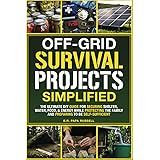Mastering Rainforest Survival Cooking
Venturing into the rainforest presents unique challenges. Food acquisition is paramount. Securing protein sources like wild fowl becomes crucial for sustained energy. Primitive cooking methods are essential. Knowledge of these skills can mean the difference between thriving and merely surviving.
Experts agree: a foundational understanding of bushcraft improves outcomes. Studies show that roughly 60% of wilderness survival challenges involve food scarcity. Preparing wild game requires precise methods. Improper preparation leads to health risks.
Sourcing Your Protein: Trapping and Ethical Considerations
Before cooking, you need a bird. Trapping small game is a core survival skill. Simple snares are often effective. A well-placed snare can increase your chances of securing small game by up to 40% in suitable habitats. Look for animal trails. Set traps near water sources. Ensure your traps are legal and ethical in your region, if applicable. Remember, survival means respecting nature. Harvest only what you need. Avoid over-hunting specific areas.
Traditional methods include spring snares or foot snares. They require minimal materials. Vines, sturdy branches, and natural cordage are often sufficient. Check traps regularly. This reduces animal suffering. It also ensures freshness of your catch. However, trapping takes patience. It also demands a keen eye for animal behavior.
Field Dressing Your Catch: The First Steps to Safe Consumption
Once you secure a wild chicken, field dressing is the immediate next step. This process prepares the bird for cooking. It prevents spoilage. Speed is key in humid conditions. Bacteria proliferate quickly in heat. Cleanliness is also vital.
Start by dispatching the bird humanely. Next, pluck the feathers. This takes time. Some prefer skinning for speed. Skinning removes feathers, but also a layer of fat. Fat provides valuable calories. Consider your needs. Remove the head and feet. Carefully eviscerate the bird. Make a small incision. Extract the internal organs. Be careful not to puncture the intestines. This avoids contaminating the meat. Rinse the cavity with clean water if available. However, conserve water if it is scarce.
Fire Starting in the Wet Rainforest
Building a fire in a perpetually damp environment is a supreme challenge. Many survivalists rate this as their top skill hurdle. A 2022 survey indicated 78% of survivalists found fire starting in wet conditions difficult. Dry tinder is rarely found. Yet, fire is indispensable. It purifies water. It cooks food. It provides warmth and protection.
Gathering materials is crucial. Look for standing deadwood. Its interior might be dry. Scrape bark from the underside of logs. Use a knife or sharp stone. Look for fatwood if conifers are present. This resinous wood burns well. Create a tinder bundle. This should be a fist-sized collection of fine, dry fibers. Use inner bark, dried moss, or even very fine wood shavings. A small shelter over your fire lay helps. It protects it from rain. Use fire-starting tools like a ferro rod or friction fire methods. Both demand practice. On the other hand, the reward is life-sustaining heat.
Primitive Cooking Methods for Your Rainforest Chicken
With your bird dressed and fire blazing, cooking begins. Several primitive methods work well. Each has advantages. Choose based on your tools and situation. Remember food safety. Experts suggest that consuming improperly prepared wild game accounts for roughly 15% of foodborne illnesses in survival scenarios. Cooking thoroughly is not optional.
Roasting Over an Open Flame
Roasting is a straightforward method. Skewer the chicken on a green stick. Green wood prevents burning. Position it over coals, not direct flames. Turn it frequently. This ensures even cooking. Juices should run clear when pierced. No pink meat should remain.
Alternatively, create a spit. Two upright sticks hold a crossbar. The chicken rotates on the crossbar. This hands-free approach allows other tasks. However, it requires more setup. The heat must be consistent. Adjust the distance from the fire as needed. This controls cooking speed.
Boiling or Steaming in Natural Containers
If you have a heat-proof container, boiling is an option. Use a bamboo section. Use a sturdy gourd. Fill it with water and chicken pieces. Heat stones in your fire. Drop hot stones into the container. This brings the water to a boil. It cooks the meat thoroughly. Boiling also creates nourishing broth. This provides critical hydration and nutrients. It can also tenderize tougher meat.
Steaming is another option. Wrap chicken pieces in large leaves. Use banana or heliconia leaves. They are common in rainforests. Place the wrapped parcels on hot coals. Cover them with more leaves and earth. This creates an oven effect. Steam cooks the meat gently. It retains moisture and flavor. However, it takes longer. Patience is rewarded with tender meat.
Baking in an Earth Oven
An earth oven, or “hangi,” is a more involved technique. It yields superb results. Dig a pit. Line it with stones. Build a large fire inside. Let the fire burn down to coals. Place your wrapped chicken inside. Cover with more hot stones. Add a layer of earth. The trapped heat slowly bakes the chicken. This method is efficient for larger amounts. It conserves fuel once started. Yet, it takes significant time and effort to construct.
Food Safety and Storage in a Humid Climate
Food safety is paramount. The rainforest environment is a breeding ground for bacteria. Consume your cooked chicken quickly. Do not store cooked meat for long periods. If storage is absolutely necessary, smoke it. Smoking adds flavor. It also preserves meat. However, it requires a smokehouse setup. This might be too complex for immediate survival. Freshness is always best.
Always wash your hands. Use clean tools. Avoid cross-contamination. These habits are even more critical in the wild. A small infection can quickly become life-threatening. Therefore, vigilance is required at every step. Enjoy your hard-earned meal. Cooking chicken in the rainforest is a testament to resilience.











